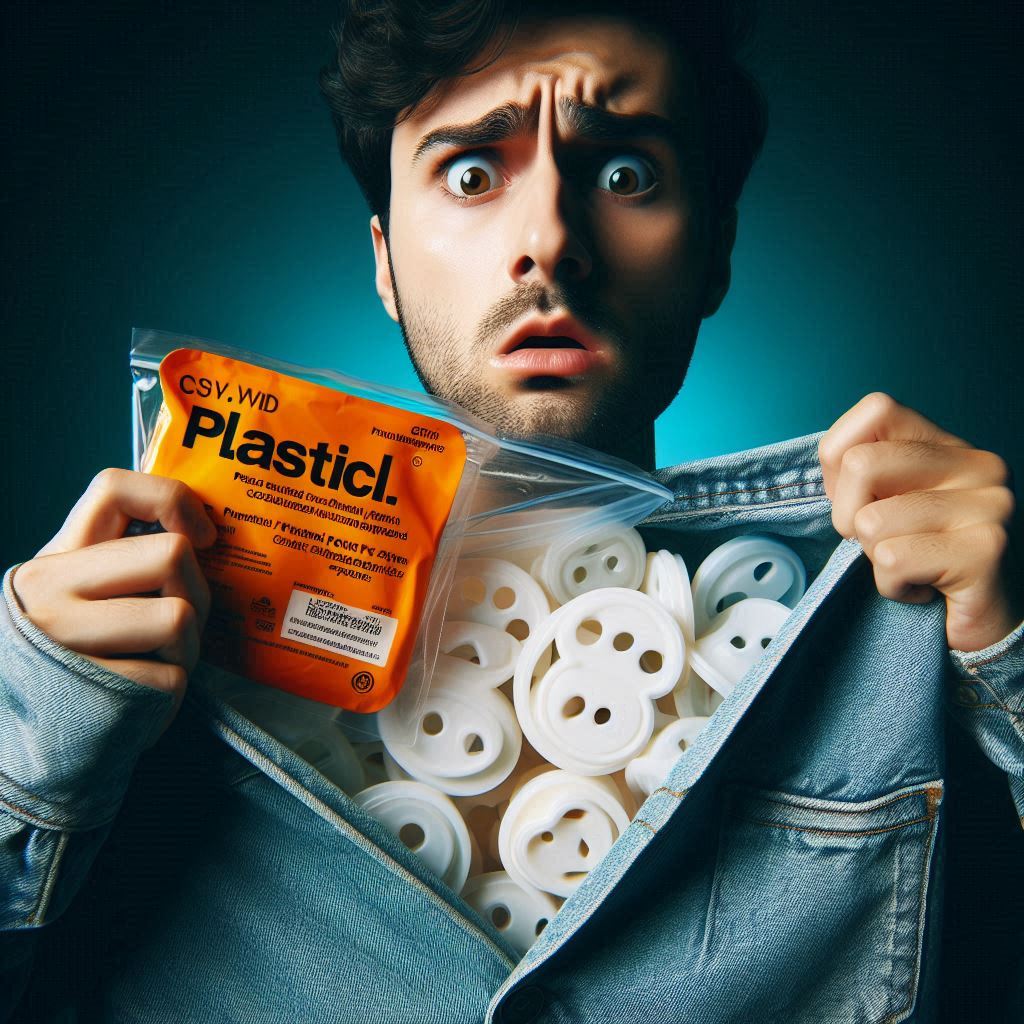We all love comfortable, stretchy clothing. Leggings that hug your curves, yoga pants that move with you, and raincoats that keep you dry – these garments have become staples in our wardrobes. But have you ever stopped to think about what makes these clothes so flexible and functional? The answer might surprise you: plasticised polyvinyl chloride, or PVC.
Yes, the same PVC used in pipes and building materials can also be found lurking in your clothing. But before you panic and toss out your entire wardrobe, let’s delve deeper into the world of plasticised PVC in clothing and understand its potential impact.
What is Plasticised Polyvinyl Chloride (PVC)?
PVC itself is a rigid plastic formed from polyvinyl chloride resin. In its natural state, it’s quite stiff and inflexible. To make it softer and more usable in clothing, manufacturers add plasticisers. These chemicals help loosen the molecular structure of PVC, making it bendable and drape more easily.
How Common is PVC in Clothing?
PVC is a versatile and relatively inexpensive material, making it a popular choice for several types of clothing:
- Activewear: Leggings, yoga pants, athletic wear often use a blend of materials, sometimes including PVC for its moisture-wicking properties and added stretch.
- Outerwear: Raincoats, windbreakers, and some winter jackets may incorporate PVC for its water resistance and durability.
- Faux Leather: Many affordable “leather” jackets, pants, and accessories are actually made from PVC, offering a leather-like look at a lower price point.
- Footwear: Some shoe soles and waterproof boots might utilize PVC for its flexibility and water-resistant qualities.
Potential Concerns with PVC in Clothing
While PVC offers some benefits in clothing, there are potential drawbacks to consider:
- Skin Irritation: Some people experience skin irritation, redness, or itching when wearing clothing with high PVC content. This can be due to sensitivity to the plasticisers or other chemicals used in processing.
- Durability: While touted for its toughness, PVC clothing can crack or peel over time, especially with frequent use and harsh washing conditions.
- Environmental Impact: PVC production can be energy-intensive and generate harmful byproducts. Additionally, discarded PVC clothing contributes to landfill waste.

Is There a Safer Alternative?
There are certainly alternatives to PVC clothing, though they may come with trade-offs:
- Natural Fibers: Cotton, linen, and wool offer breathability and comfort but might lack the stretch and water resistance of PVC blends.
- Recycled Polyester: Made from recycled plastic bottles, this eco-friendly option provides similar performance characteristics to PVC but requires more energy to produce.
- Organic Cotton: This sustainable choice offers breathability and comfort but tends to be more expensive than conventional cotton.
Making Informed Choices About Your Clothing
Here’s how you can navigate the world of PVC clothing with a more informed approach:
- Check the Label: Always read the clothing label to understand the material composition. Look for a percentage of PVC or polyvinyl chloride.
- Prioritize Natural Fibers: When possible, opt for clothing made from natural fibers like cotton or wool for better breathability and comfort.
- Research Sustainable Brands: Several brands are committed to using recycled materials and eco-friendly production methods in their clothing.
- Invest in Quality: Opt for well-made clothing from reputable brands. Quality garments tend to last longer, reducing waste.
- Consider Second-Hand: Look for pre-owned clothing made from natural fibers to extend the life cycle of existing garments.
The Bottom Line: Plasticised Polyvinyl Chloride
PVC can be a functional material in clothing, offering flexibility and water resistance. However, it’s essential to be aware of potential drawbacks like skin irritation and environmental concerns. By understanding the material composition of your clothes and making informed choices, you can strike a balance between comfort, sustainability, and well-being.
Remember: You have the power to choose what you wear. By being a conscious consumer, you can support brands committed to ethical and sustainable practices. The next time you shop for clothes, take a moment to consider the materials and their potential impact. After all, what we wear not only affects us but also the world around us.
Polyvinyl Plastic: A Historical Journey – From Invention To Now
Polyvinyl Plastic: A Historical Journey – From Invention To Now





